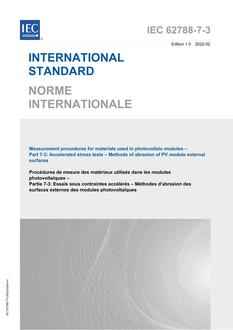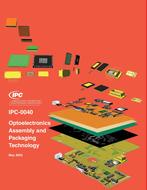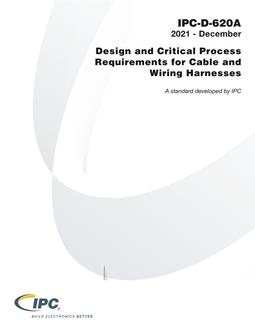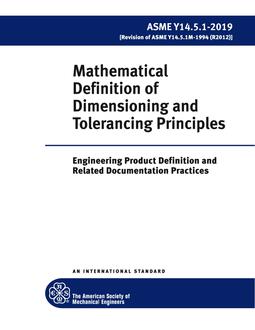
IEC 62788-7-3 Ed. 1.0 b PDF
Original price was: $183.00.$110.00Current price is: $110.00.
Measurement procedures for materials used in photovoltaic modules – Part 7-3: Accelerated stress tests – Methods of abrasion of PV module external surfaces
| Published by | Publication Date | Number of Pages |
| IEC | 02/01/2022 | 48 |
IEC 62788-7-3 Ed. 1.0 b – Measurement procedures for materials used in photovoltaic modules – Part 7-3: Accelerated stress tests – Methods of abrasion of PV module external surfaces
This part of IEC 62788 defines the test methods that can be used for evaluating the abrasion of materials and coatings in photovoltaic modules or other solar devices. This document may be applied to components on the incident surface (including coatings, frontsheet, and glass) as well as the back surface (including backsheets or back glass). This document is intended to address abrasion of PV module surfaces and any coatings present using representative specimens (e.g. which can be centimetres in size); the methods and apparatus used here can also be used on PV module specimens (e.g. meters in size). A suite of tests and their methods are identified in this document, including falling sand, forced sand impingement, and machine (brush) abrasion. Materials and coatings can have different intended design purposes and design lifetimes and therefore no specific pass/fail criteria are defined in this document. The results of the testing can, however, be used to identify relative durability of coatings for various outdoor environments and cleaning practices. The methods can be used for the purpose of relative comparison, e.g. for the purpose of material or coating selection. The quantitative correlation between artificial abrasion and field erosion (which will depend on factors including climate or location of use as well as application, e.g., use of a tracker, rack-mount, roof-mount, building integrated, or vehicle integrated PV) can be established for each specific material or coating, which is beyond the scope of this document.
The correlation between the rates of degradation from the different test methods (linear brush, rotary brush, falling sand, and forced impingement) is beyond the scope of this document and may be covered in referencing documents. The correlation between the rates of degradation for unaged and aged specimens is also beyond the scope of this document and may be covered in referencing documents.
The methods related to the characterization of abraded specimens (which might include optical transmittance, optical reflectance, surface roughness, and surface energy) are not defined in this document; characterization methods from other standards (including optical transmittance, optical reflectance, electrical performance, surface roughness, and surface energy) can be applied to specimens abraded using the methods defined in this document. Methods for examining the contamination of specimens, including artificial soiling, are not examined in this document. Additional specimen conditioning can be applied prior to the methods in this document. The abrasion tests in this document can be referenced and/or applied in conjunction with an accelerated test or test sequence in other standards.
Product Details
- Edition:
- 1.0
- Published:
- 02/01/2022
- ISBN(s):
- 9782832253861
- Number of Pages:
- 48
- File Size:
- 1 file , 1.1 MB
- Note:
- This product is unavailable in Ukraine, Russia, Belarus



